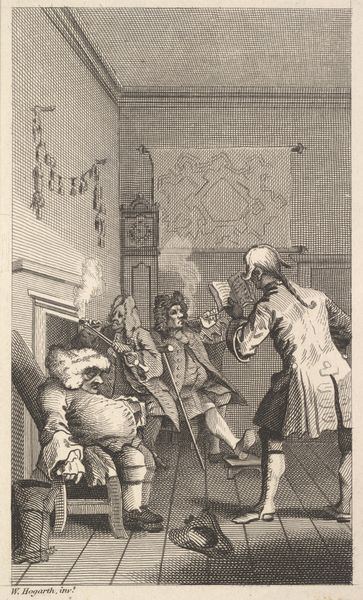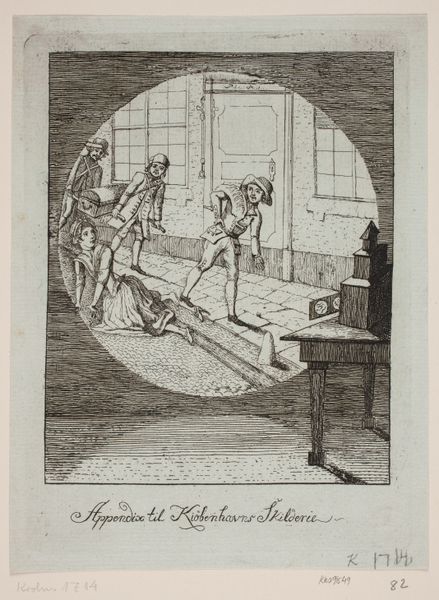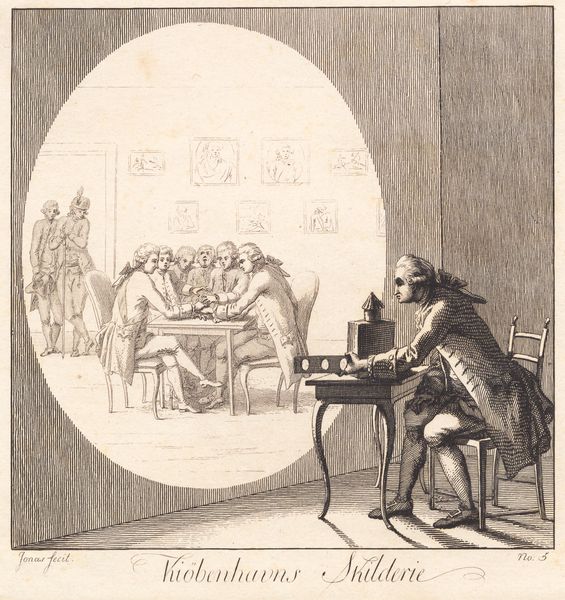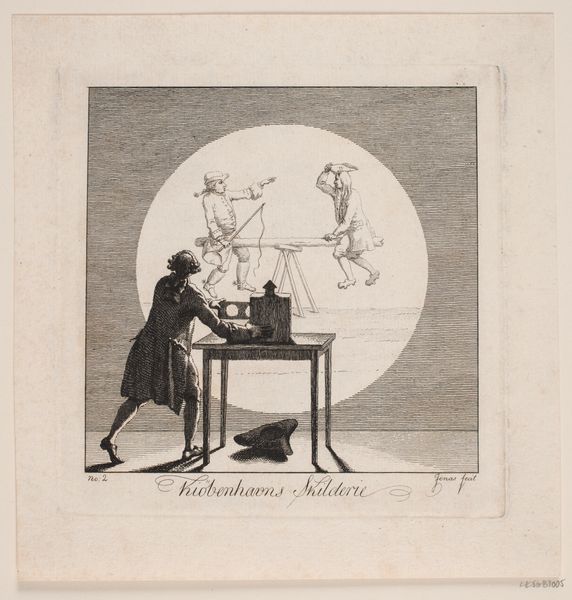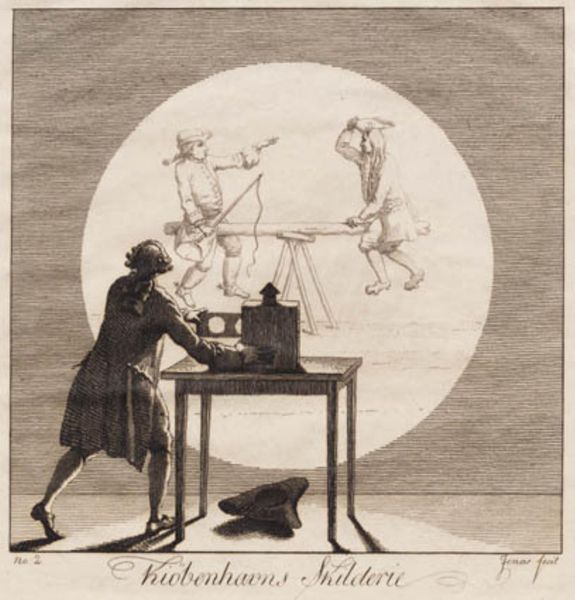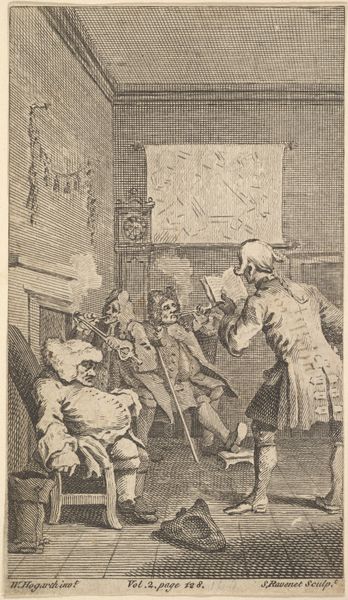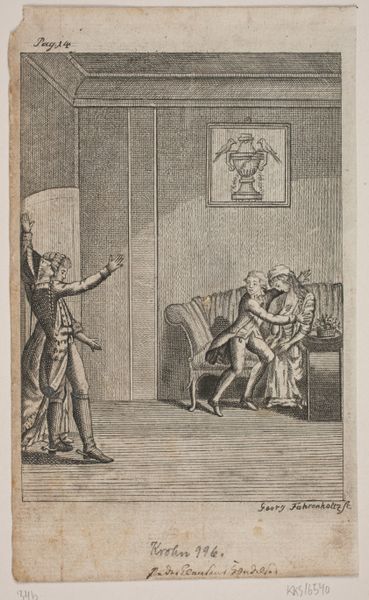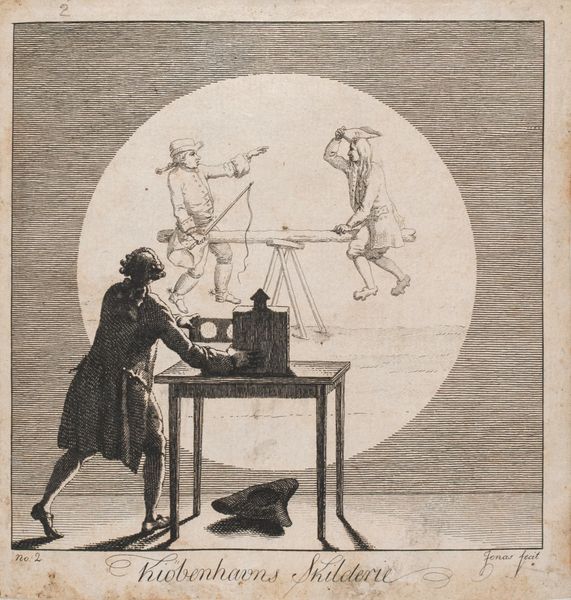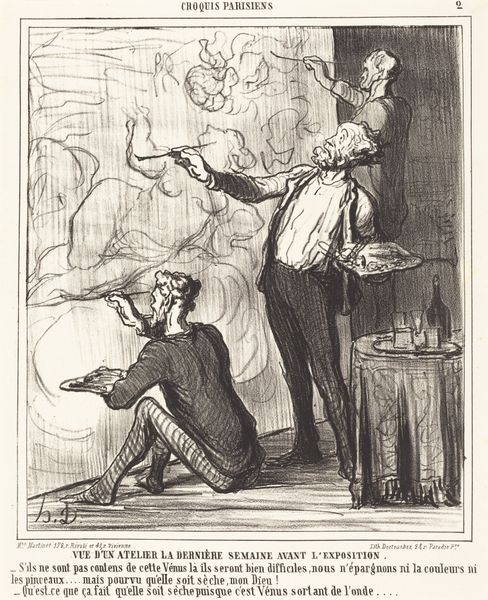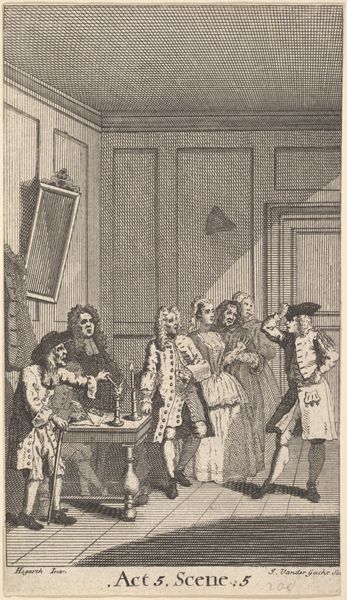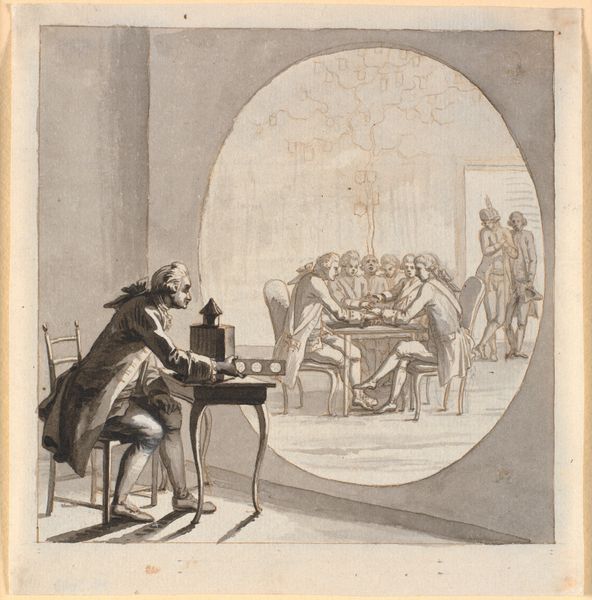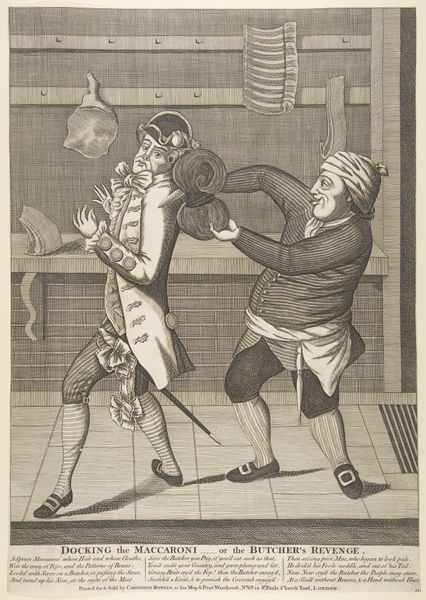
Dimensions: 197 mm (height) x 188 mm (width) (bladmaal), 158 mm (height) x 153 mm (width) (plademaal), 135 mm (height) x 137 mm (width) (billedmaal)
Editor: Here we have J.F. Clemens’ etching, “Kiøbenhavns Skilderie”, nr. 3, created sometime between 1785 and 1788. The scene is chaotic, figures scaling walls and carrying heavy loads while a gentleman seems to survey it all with a smirk. What’s your read on what this piece is trying to communicate? Curator: It’s fascinating, isn’t it? Clemens crafted this etching during a time of great societal change in Copenhagen. These scenes, part of a series, were more than just decorative; they functioned as social commentary. Consider the title, "Copenhagen Paintings". Clemens wasn’t just depicting the city, he was actively interpreting it. What do you notice about the activities of the figures depicted? Editor: They seem to be… pilfering? Climbing a ladder to a window, lugging sacks, someone asleep on the stairs. Curator: Precisely. Clemens uses humor to address serious concerns. The etching points to a society grappling with poverty and perhaps questions the morality of certain social strata. The smug gentleman could be interpreted as someone taking advantage of the situation, or perhaps even benefiting from it. How do you think contemporary audiences would have reacted to such blatant social commentary presented in this manner? Editor: I imagine it would be quite provocative, maybe even a little dangerous to display it publicly! Curator: Indeed. The beauty of prints is their accessibility, they were often circulated among wider audiences than paintings hung in aristocratic homes. Therefore, Clemens' work might be considered a bold act, democratizing critique through art. It's a blend of entertainment and engagement, reflecting the emerging public role of art. Editor: That definitely shifts how I see it. It's not just a funny picture; it's a visual statement about power and society. Curator: Exactly. Looking at it now, it gives us insight into the cultural and political anxieties brewing in Copenhagen during that period. Editor: I’ve gained a much deeper appreciation for what this artwork tells us about 18th century Copenhagen beyond what immediately meets the eye. Thanks for shedding light on all that!
Comments
No comments
Be the first to comment and join the conversation on the ultimate creative platform.

